Great authors of the past such as Herman Hesse, Goethe and Stendhal dedicated parts of their works to Spoleto or mentioned it in private letters they wrote during their travels in Italy, pleasantly impressed by the beauty of this city. Before you even enter the walls, you will be fascinated by the sight of the magnificent Ponte delle Torri (Towers Bridge) which so impressed the German philosopher. The grandeur of Renaissance architecture blends harmoniously and magical-evocatively with the thick foliage of the trees that populate the dense forests of the surrounding valley. The ancient Roman vestiges, witnesses of a period of prosperity, still stand out among the medieval and modern monuments. The Rocca Albornoziana and Mount Luco are sceneries with a landscape that almost always looks like a life-size creche. Walking through the city streets, discovering the famous sculptures that have marked the artistic history of the twentieth century since 1962, enjoying the fragrance of tradition and genuine cuisine, surrounding yourself with the elaborate architecture of the countless churches that occupy all corners of the city, you will have the impression of having found one of the strongest and most important cities in all of central Italy. In fact, after the fall of the Roman Empire, the Duchy of Spoleto assumed great strategic importance in the new Italian political scenario and managed to keep the vast surrounding area under its control for several centuries. If you happen to visit the city during its most important event, the renowned Festival of Two Worlds, you will have the clear perception that despite the passage of time Spoleto has never lost its greatness!
Spoleto
Go to my journey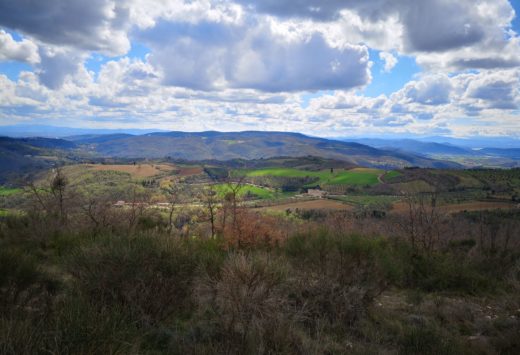 PRIVATE GUIDED ROADBIKE TOUR
PRIVATE GUIDED ROADBIKE TOURAcquasparta and the Roman Ruins of Carsulae
Come with us and discover Roman ruins and ancient forests
Price is lower based on umber of people
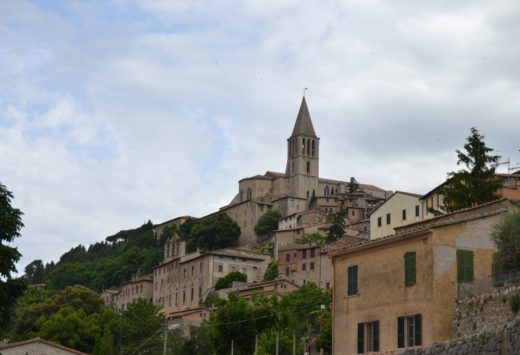 PRIVATE GUIDED ROADBIKE TOUR
PRIVATE GUIDED ROADBIKE TOURAge-old villages between Todi and the Martani mountain range
A route through the Martani mountains, on the trail of hamlets and villages
Price is lower based on umber of people
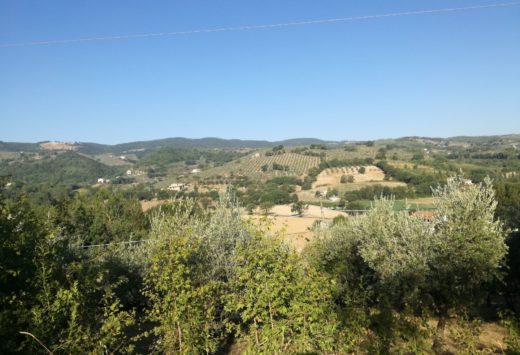 PRIVATE GUIDED ROADBIKE TOUR
PRIVATE GUIDED ROADBIKE TOURBetween Trevi and Spoleto on the Valle Umbra cycle path
A quiet cycle ride, protected by the hills of the Umbria valley
Price is lower based on umber of people
 ADVENTURE
ADVENTURECanyoning in Umbria, Valnerina
Hurl yourself onto sheets of glistening water or white-water torrents or climb down rock faces and dive into the river. Experience the canyoning in Umbria!
Price is lower based on umber of people
 CRAFT WORKSHOP
CRAFT WORKSHOPChocolate from Norcia. Workshop and wine pairing
Chocolate workshop and wine pairing guide.
Price is lower based on umber of people
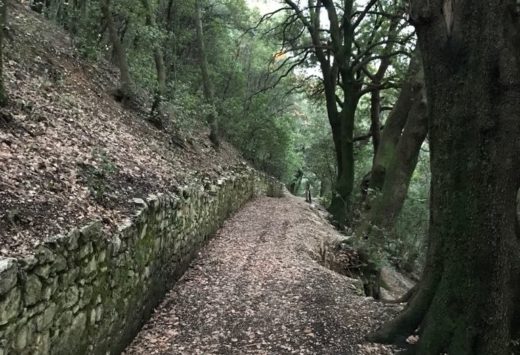 PRIVATE GUIDED MTB TOUR
PRIVATE GUIDED MTB TOURCross Country – the Sassovivo woods by MTB
In these magnificent woods you’ll need maximum peddle power
Price is lower based on umber of people
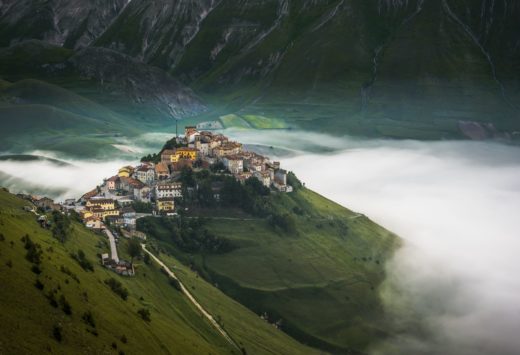 PRIVATE GUIDED TREKKING TOUR
PRIVATE GUIDED TREKKING TOURFrom ‘Rifugio Perugia’ to Castelluccio di Norcia
A long but easy route in the stunning setting of the Sibillini mountains
Price is lower based on umber of people
 PRIVATE GUIDED MTB TOUR
PRIVATE GUIDED MTB TOURFrom Castel San Felice to the ‘Cascata delle Marmore’ waterfalls
A cycle ride in nature, from the village of Castel San Felice to the splendid Marmore waterfalls
Price is lower based on umber of people
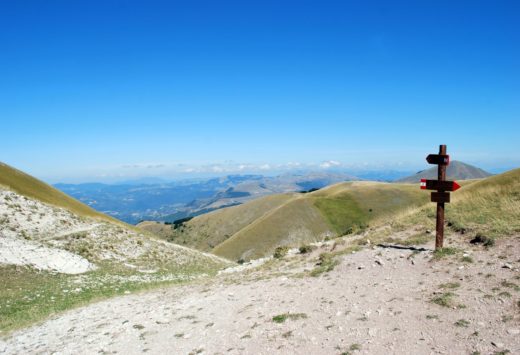 PRIVATE GUIDED TREKKING TOUR
PRIVATE GUIDED TREKKING TOURFrom Spoleto to Patrico, along the ‘Strada dei Patricani’ route
From Spoleto, on a nature trail steeped in ancient know-how
Price is lower based on umber of people
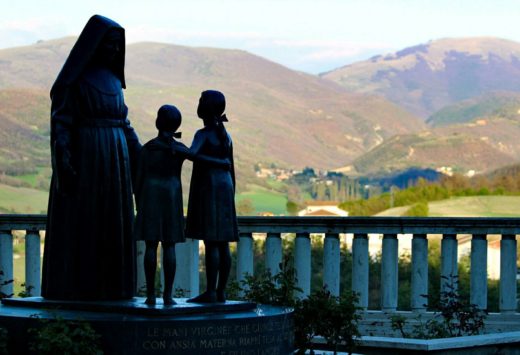 PRIVATE GUIDED CITY TOUR
PRIVATE GUIDED CITY TOURGuided Tour of Cascia
Explore the city of St Rita, a spiritual journey in a village surrounded by nature
Price is lower based on umber of people
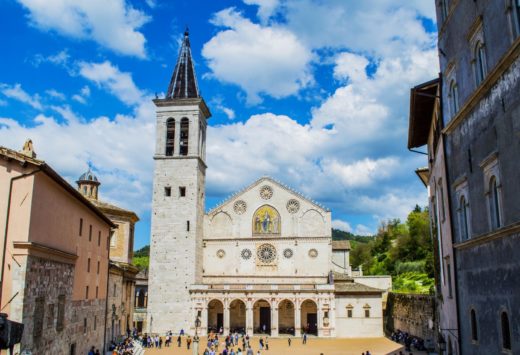 PRIVATE GUIDED CITY TOUR
PRIVATE GUIDED CITY TOURGuided tour of Spoleto
Discovering one of the most important Duchies in Italy, and retrace the centres of old Longobard power
Price is lower based on umber of people
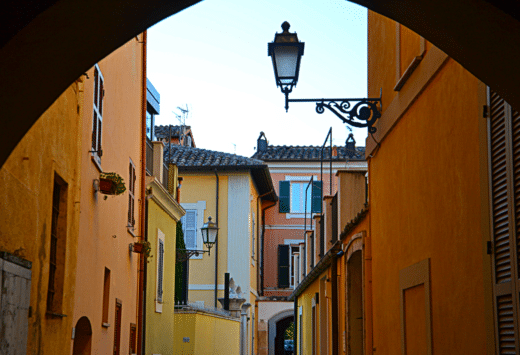 PRIVATE GUIDED CITY TOUR
PRIVATE GUIDED CITY TOURGuided Tour of Terni
The harmonious interplay of history and modernity, tradition and everyday life
Price is lower based on umber of people
What to see and what to do in Spoleto
Discovering Spoleto
If you love ancient, Roman and late medieval history, appreciate the forms and decorations of religious architecture, are moved by nature and sculptures, and if, by chance, you have also seen the television series about the detective priest Don Matteo with Terence Hill in the role, then your visit to the city of Spoleto will not fail to fill you with strong emotions.. The ninth season of the TV series was entirely filmed in the city streets, in the most evocative places of the historic center and surroundings, from the Duomo (Cathedral) to the Rocca Albornoziana (Fortress). In the southern part of the town, you will come across the city’s archaeological area, where a long series of Roman monuments are preserved just a few meters from each other. They testify the importance that Spoleto must have had at the time of the empire: the Arch of Drusus and Germanicus, the Roman Theater, the Roman House (perhaps the home of the mother of Emperor Vespasianus, Polla), the Church of St. Ansano with the underlying Crypt of St. Isaac (built with recycled materials on a previous Roman temple and early Christian church) and, finally, the Complex dedicated to St. Agata, which today houses the National Archaeological Museum. Continuing up the slope on the eastern side of the city, before reaching the heart of Spoleto, you will encounter the Church of St. Eufemia in the Archiepiscopal courtyard, the fourteenth-century Palazzo Comunale (City Hall), the elegant Palazzo Mauri, now the Municipal Library, and a series of religious buildings with peculiar architectural features in which works of art by local and non-local masters are preserved, all of which gravitate around Piazza Duomo: the Church of St. Filippo Neri, the Church of St. Domenico, the Church of the Saints Giovanni and Paolo and the Church of St. Maria della Manna d’Oro.
Once you’ve reached the east-central part of the historic center, you will find yourself in the pulsing heart of the ancient town with Piazza Duomo and its elegant arcades, the mosaic with Christ, and the lovely rose windows of the Romanesque Church of St Maria Assunta. After spending as much time as you need, continue north to complete the visit of the historic center and its sites before seeing the wonders that the city offers beyond the well-preserved city walls. In the northern area of the city are the remains of the Roman Amphitheater, the Convent of St. Nicolò, where Martin Luther also resided in 1512, the most interesting Torre dell’Olio (Oil Tower), from which boiling oil was thrown on the invading enemies, the Bloody Bridge (Ponte Sanguinario), preserved only in part and whose name is perhaps due to the blood shed there by the Christian martyrs, and, finally, the interesting Basilica of St. Gregorio Maggiore.
Beyond its walls there are still treasures to be discovered, above all the magnificent Basilica of St. Salvatore, named a UNESCO World Heritage site in 2011 as part of the documentary “The Longobards in Italy. The places of power (568-774 AD).” Visit the scenic Towers Bridge (Ponte delle Torri), whose majestic, elegant profile is a unique landmark that characterizes the town, joining Sant’Elia to Mount Luco. You will be quite impressed by the imposing Rocca Albornoziana fortress built atop the St Elia hill to defend the town and valley. Over the centuries, governors and popes resided there; today it hosts the National Museum of the Duchy of Spoleto. Walking past the city gates on the south side, you will have the opportunity to visit three interesting places of worship: the Church of St. Paul Inter Vineas, the Sanctuary of the Madonna of Loreto and, not to be missed, the Church of St. Pietro Extra Moenia. The latter, in fact, is considered one of the most beautiful and interesting churches in all of Umbria with its decorative sculptures on its façade that make it stand out among churches – a very pleasant ensemble of religious scenes and medieval imaginary allegories, told through decorative reliefs of extraordinary beauty.
The Cathedral in Spoleto, with its marvelous façade, constitutes a sort of backdrop in Piazza Duomo, where it stands surrounded by numerous other buildings.
The cathedral was built in the 12th century on the remains of a previous religious building dedicated to St. Mary del Vescovado, which in turn was built on an older place of worship dedicated to the martyr Primianus. The St. Primiano Crypt, which can be accessed through the rectory, is dated to the 9th century and represents the only original portion of the ancient cathedral, rebuilt at the end of the 12th century.
The cathedral is flanked on the left by the imposing quadrangular bell tower and its façade has an elegant portico with five round arches supported by Corinthian columns, an admirable work of the master Ambrogio Barocci erected in 1492. The upper part is divided into two levels separated by a cornice supported by blind arches; the lower order is decorated with five beautiful rose windows, the larger central one is surrounded by the symbols of the four evangelists. The upper order has three rosettes and three ogival niches; the central one, of larger dimensions, is decorated by a beautiful mosaic depicting Christ enthroned between the Madonna and St. John the Evangelist. The decorative elements are further embellished by the use of blocks of pink and white local stone that enhance the architectural details.
Inside the space is divided into three naves with a central apse, and the plan is a Latin cross with a transept. The church contains numerous works of art by artists from different periods: the bronze bust of Urban VIII was done by Gian Lorenzo Bernini in 1640; the Cross painted with the icon of the living Christ (triumphans) is the work of Alberto Sotio from 1187; the series painted with stories of the Vergin, which decorates the central apse, was frescoed by Filippo Lippi between 1467 and 1469.
Finally, absolutely worthy of note are two chapels: the Chapel of the Most Holy Icon, where a 12th-century Byzantine tablet is preserved, which tradition says was donated to the city of Spoleto by Federico Barbarossa (Redbeard) as a sign of peace; and the Chapel of the Relics where one of the only two still existing letters signed by Saint Francis is kept. It is a small rectangular parchment (13 × 6 cm) made from goatskin, containing nineteen lines addressed to Fra Leone. The other signed letter is the so-called chartula, preserved in the Basilica in Assisi, which tradition says was written by Francesco in 1224, after he received the stigmatization on Mount Verna.
The inside of the building as it appears today is the result of a decisive seventeenth-century intervention that gave it a Baroque style.
Inside Spoleto’s city cemetery, and unfortunately off the beaten tourist path and nearly forgotten, stands the Basilica of San Salvatore that the renowned Spoleto historian Giuseppe Sordini called “the greatest building in Spoleto from ancient times.”
In fact, although there are no historical documents to ascertain its exact origins but different hypotheses among scholars exist regarding dates, the Basilica is clearly a building from the Early Christian period, one of the rare and most important testimonies of religious architecture of the IV and V centuries.
UNESCO confirmed its importance in 2011 when it included the Basilica and the other buildings that make up the site in the text “The Longobards in Italy. The places of power (568-774 AD)” in their list of World Heritage Sites.
Over the centuries, various interventions have changed the appearance of the Basilica and its name has been changed various times as well. Originally linked to the cemetery cult, it appears to have been dedicated to the martyr saints Concordio and Senzia, to whom miracle-working virtues were attributed. In 815, a Longobard document mentions the building as dedicated to San Salvatore, a change likely decided by the dukes of that time. Subsequently, it was known as the Monasterium Sancti Concordii, and then in the sixteenth century, based on some frescoes on the internal walls of the apse that recalled the cult of the crucifix, it was called the Church of the Crucifix.
It was only in modern times when renovations were done in the 1900s that the basilica took on the final name of Basilica of San Salvatore.
The façade has three doors but only the center one gives access to the church. The other two had been walled up long before the latest renovations. Above the doors are three windows, the center one larger than the other two.
Inside, the space is divided into three naves separated by Doric columns and pillars that define seven bays. On the walls, although quite ruined, are the remains of precious frescoes dating back to the 12th-13th centuries depicting the Eternal Father, the Madonna among the Saints, and the Crucifixion.
The church today is not open for entry but visitors can look in from the entrance door.
Connected to the Basilica is the Monumental City Cemetery, designed in 1836 by the architect Ireneo Aleandri, who designed many other important buildings in town such as the Teatro Nuovo. Entrance to the cemetery is up a large staircase with two open areas that flank it used during funerals of well-known citizens. Although these were added later to Aleandri’s design, the structure respects his neoclassical style, all of which enhance the spectacular effect of the basilica.
Among the many monumental tombs, some that particularly stand out are those of the Antonelli, Bachilli and Sansi families, which have valuable monumental sculptures and decorative paintings.
The splendid Basilica of San Gregorio Maggiore overlooks Piazza Garibaldi opposite the monument dedicated to the great hero of Italian history Giuseppe Garibaldi, a short distance from one of the entrances to the historic center of the city – Porta di San Gregorio (St Gregory’s Gate). It is just one of the various buildings dedicated to the holy martyr within the city walls; besides the basilica, there are other places of worship near the Sanguinario Bridge, also linked to the saint’s life, and in the San Gregorio forum of the Synagogue.
The basilica was built on an earlier cemetery site and was erected in its present form in 1079. It underwent numerous changes over the centuries, but according to tradition, the original church was founded in the 4th century by a widow named Abbondanza, who recovered the body of the martyr, gave it a proper burial and built the church.
The monumental facade has three 14th century arches in the upper part, surrounded by three recessed arches. The central one preserves the remains of a sixteenth-century fresco attributed to Giovanni da Foligno, perhaps also known as the artist Giovanni di Corraduccio. The entrance to the building is through a large door commissioned in 1597 by Bishop Sanvitale, framed and embellished by a sixteenth-century portico with three arches.
Inside, the basilica is divided into three naves, with a raised presbytery, in turn divided into three small aisles all ending with apses. To the sides there are various chapels, among which the most important are the Chapel of the Sacrament, where a tabernacle from 1523 is kept, which was transferred from the Star of Spoleto monastery in 1860; and the Chapel of the Innocents, decorated with scenes inspired by the history of the church and of St. Abbondanza – the saint who built the church and the martyrs that were thrown from the Sanguinario Bridge.
The crypt below the presbytery is also quite interesting; the large space is divided into five aisles with three apses. An inscription and tradition claim that as many as ten thousand martyrs were buried there. Indeed, the crypt contains numerous human remains from various periods, kept in various sarcophagi.
The building still retains fragments of the floor decorated with Cosmati stonework designs, frescoes dating from the 12th-15th centuries and numerous masonry materials from the Roman period. These are particularly visible not only in the crypt but also in the bell tower, completed in 1492. Finally, connected to the church is an elegant cloister with a double order of round arches supported by octagonal terracotta pillars. The first order was probably built in the 12th century at the same time as the church, while the second, on the upper level, was perhaps an addition from the 16th century.
Towers Bridge, a bridge of towers, is an extraordinary structure whose bulk and beauty is a unique landmark in Spoleto. It is an imposing structure built of blocks of local limestone composed of nine enormous pillars that support ten round arches; on top is a road that connects the St Elia hill with the Rocca Albornoziana (Fortress) to the town of Spoleto and Mount Luco. The bridge serves a dual purpose – it connects the hill to the city and it is part of an aqueduct. In fact, alongside the road is a canal that carries water from the mount to the town. The date of the bridge, over 80m high (240 ft) and 236m (700 ft) long, is uncertain. Some scholars date it to the 1200s built on the ruins of an ancient Roman aqueduct; others claim it is from the 14th century when the cardinal Albornoz commissioned the fortress on the mount. It got its name most likely from two ancient towers that guarded the ends – one on mount St Elia and the other near the Fortino dei Mulini (a watermill), where there are still today two city-owned watermills that collect water from the mount and convey it to the bridge. The two center pillars have hollow bases, and there are rooms probably used long ago by guards who controlled the aqueduct and goods in transit subject to customs taxes.
The bridge has always been a favorite place from which to enjoy a breathtaking view of the town and valley, which will awe visitors and tourists just as it did the German poet Johann Wolfgang von Goethe, who dedicated an entire page to it in his book Viaggi in Italia (Travels in Italy). There is a plague commemorating this fact near the bridge itself.
Construction of the Albornoziana Fortress, also known as the castle of Spoleto, began in 1359 at the top of the Sant’Elia hill overlooking the town and surrounding valley. This imposing military fort, built to have control over the Via Flaminia, was commissioned by Pope Alexander VI along with several others similar to it for the purpose of reinstating papal control over areas of central Italy while he was in Avignon. The pope, who lived in Avignon, sent to Spoleto a powerful Spanish cardinal named Albornoz, who asked Matteo di Giovanello da Gubbio, known as Gattopone, to oversee the construction works which were terminated in 1370.
Because of its strategic position and impressive appearance, the fortress became the seat of important authorities over the centuries such as Duchy chancellors, city governors, and papal legates. According to tradition, Lucrezia Borgia, daughter of Alexander VI, who named her ruler of the Spoleto Dukedom at just 19 years of age, stayed there on two occasions: in 1499 for three months and in 1502 during a brief stopover on her way to Ferrara.
The fortress has a rectangular plan with six imposing towers, the largest and most central of which is called “Torre della Spiritata” (Tower of the Spirited One), perhaps in reference to the outspoken pontiff’s daughter. Inside the perimeter walls there are two courtyards: the Cortile delle Armi (the Courtyard of the Armed Guards), dedicated to the armed militia and the Cortile d’Onore (Honor Yard), used by administrators and governors. This latter courtyard had a double loggia entirely in terracotta and an elegant six-sided well. Among the numerous interior rooms, one should certainly be mentioned – the Salone d’Onore (Hall of Honor), the largest room of the entire building intended for ceremonies and banquets and decorated with frescoes from the sixteenth and seventeenth centuries, and the Camera Pinta (or Picta) (Painted Room) also decorated with frescoed scenes of chivalry from between 1392 and 1416.
Between 1817 and 1983, the fort was used as a prison and most of the artworks were lost. Only after the prison was closed did extensive renovation works begin, which restored the importance of the structure, and in 2007 the National Dukedom Museum was opened there. The museum occupies 15 old rooms of the fort on two floors. On the lower floor are chronological exhibits that tell the history of the territory known as the Dukedom of Spoleto over the period between the 4th and 15th centuries. On the upper floor are sculptures and paintings from the Romanesque and Renaissance periods.
This Roman house was discovered in 1885 by the local archeologist Giuseppe Sordini, who worked on its restoration until he died in 1914.
The house is near the old Roman Forum that is now Piazza Mercato. It was obviously the home of an important person of the times; this has been deduced from the sophisticated decorations and the architecture of the house itself. During excavations, an inscription was found dedicated to Emperor Caligola and signed by Polla. This surname can only lead one to suppose that the house belonged to Vespasiana Polla, mother of the emperor Vespasiano who was originally from the area between Norcia and Spoleto.
Despite the multiple restorations carried out over time, the type of masonry and the style of the frescoes and mosaics date this Roman house to the 1st century AD. The layout of its rooms also follows the architectural plan used in the Roman patrician houses built between the end of the republican age and the beginning of the imperial age. The rooms still have the beautiful almost intact mosaic floors. Down a short corridor you enter the central hall, the atrium, in the center of which you can admire the impluvium, a square-shaped basin in which rainwater was collected and then transferred to a 7-meter-deep cistern below. Immediately after the atrium, you enter the ablinum, the most elegant and elaborately decorated room of the house, where family, political and social activities took place. This room is flanked by two smaller rooms whose decorations probably date to a later period. Originally, the room on the left probably led to the peristiliumche, an inner garden enclosed by a portico. Around the entry hall there are two bedrooms (cubicola) and two open rooms (alae). The floor is paved with black and white mosaic tiles in geometric designs with traces of encaustic (hot wax painting) decorations.
A short distance from the city hospital in the southwest outskirts of Spoleto stands an abbey dedicated to St Paolo Inter Vineas, mentioned in several historical texts from the ancient 6th century. In one of his writings, Gregorio the Great tells of a heretical Arian bishop who went suddenly blind when he forcefully tried to celebrate a Mass in the church. There is another mention of the church in a text from the 10th century when a women’s convent was founded. The church appears today as it was restructured in 1234 and again after it underwent major works completed in 1965 to restore the ancient Romanesque architecture.
The oldest part of the abbey is the cloister with round arches on alternating columns and pillars, which was part of the nuns’ convent in the 10th century.
The external façade is very similar to those of the town’s churches of San Pietro and San Ponziano, with the main door in three recessed frames and a beautiful decorative central rose window high above. Inside, the church has three aisles that end at the transept. Most of the frescos that once decorated the walls of the whole transept and apse were removed and, unfortunately, lost during restoration work. The remaining parts of old frescos have been attributed to at least two different artists seemingly between the 12th and 13th centuries.
The small but pretty Church of Sant’Ansano stands a short distance from the Arch of Drusus and the archaeological area of the town. The building as we see it today is the result of a restoration by the Milanese Antonio Dotti in the 1700s. The church has a lovely facade decorated with four large half-columns, two on each side. Entrance to the church is through a small central door surmounted by a simple rectangular window that illuminates the building. Inside, the church has a single nave and preserves valuable works of art including a beautiful fresco of the Madonna and Child and two saints painted by Giovanni di Pietro, better known as “Lo Spagna,” and a painting depicting the martyrdom of St Ansano by the seventeenth-century artist Archita Riccida Urbino.
A narrow staircase leads down to the Crypt of St. Isaac, a Syrian monk who arrived in Spoleto in the sixth century, a pioneer of hermit life on Monte Luco. The crypt is divided into three small naves separated from each other by small recycled columns with early medieval capitals dating back to the VIII-IX century, and barrel-vaulted ceilings. Numerous 11th-12th century frescos are preserved here.
Archaeological excavations have ascertained that the church must have been built in the early Christian age on a pre-existing Roman temple. Later, as the centuries passed and the road surface rose, it was necessary to build the new church above the previous one that became the crypt.
The group of structures dedicated to Sant’Agata (St Agatha) is in the street of the same name near the town’s archeological site. It is composed of a small ancient church, only the portico of which remains today and the convent commissioned in 1395 by the Benedictine nuns who lived at the Church of St Paolo Inter Vineas. When this dwelling place became unsafe, the nuns had to transfer inside the city walls, where they lived in private houses belonging to the Corvi family that one of the nuns had inherited.
Some decorative bas-reliefs are still visible on the walls of the structure, dating back to the 11th century; they show the ravens that were a symbol of the family. In the sixteenth century, the complex was enlarged and partly modified. A beautiful fresco, attributed to an anonymous Spoleto artist from that period can be seen on the back wall of the refectory depicting The Last Supper and Christ Praying in the Garden of Gethsemane. In 1886 the convent was taken over by the newly formed Italian state and the nuns, forced to abandon their headquarters, devastated the complex causing extensive damage to floors and windows before moving permanently to the monastery of Santa Lucia di Trevi, in 1965. From 1870 to 1954 the building housed a women’s prison while today it is the National Archaeological Museum. The small church annexed to the convent, which was built close to the pre-existing Roman theater, preserves only the portico consisting of three pointed arches on columns from the 11th century.
The lovely Romanesque church of St. Eufemia stands in the courtyard of the Palazzo Arcivescovile (Archbishop’s Palace). Historical texts refer to a church near the Palazzo Ducale (Duke’s Palace) dedicated to this saint in the tenth century, when Spoleto was still the capital of the powerful dukedom. According to tradition, one night in 980, Gunderada, the Mother Superior of a Benedictine monastery, with some other nuns and a priest recovered the body of the martyr Giovanni, bishop of Spoleto, and took it to the church, which later became a pilgrimage destination because of various miraculous events attributed to him. In the 11th century, the church underwent profound changes and extensions following the construction of the Archbishop’s Palace, which incorporated the previous structure, enriching it on this occasion with numerous Lombard elements. Today this church is the most valuable example of Lombard-style Romanesque architecture in the city.
In 1446, Pope Eugene IV appointed his brother Marco Condulmer as administrator of the diocese, and for some time he decided that the church would change its name and be dedicated to St Lucia. There is a column in the church decorated with a fresco of Saint Lucia, dated to 1455.
Over the following centuries, the church underwent numerous, mostly damaging renovations, until its final restoration in modern times, carried out between 1907 and 1954 by the Spoleto archaeologist Giuseppe Sordinie. Today it is used now and then for liturgical, artistic and cultural events, having been deconsecrated long ago.
The particularly simple façade is made of very light-colored stone blocks and has a large central door with recessed arches and double lancet windows.
The interior is divided into three naves separated by columns and pillars, very much reminiscent of the church of St. Lorenzo in Verona, so much so as to suggest the involvement of Veronese workers in the realization of this lovely building.
The Palazzo Comunale looks onto the square of the same name (Piazza del Comune) opposite the Bishop’s Palace (Palazzo Arcivescovile). The origins of the building date to the 13th century, but what you see today is the result of renovations and reconstruction works carried out in the 1700s; the only part remaining from the 1200s is the tall tower.
A strong earthquake seriously damaged the building in 1703. It was restored with decorations on both sides: on the north side, the decorations were done by the architect Pietro Ferrari between 1784 and 1786, whereas the southern side, the one looking onto the Piazza del Comune, was decorated by Spoleto architect Francesco Angelo Amadio, called ‘Lo Scheggino’, beginning in 1782.
In the modern age, the adjacent Palazzo Brancaleoni was incorporated into the southern facade and, from 1913, it was embellished with decorations by local artists Giuseppe Moscatelli e Benigno Peruzzi. These artists also decorated numerous rooms inside the palace with paintings and sculptures: the Dukes’ Hall (Sala dei Duchi) with portraits on the ceiling of the most important Lombard dukes of Spoleto; the Sala Caput Umbriae, in which all the most illustrious citizens of the city in history are represented; and, finally, the Chapel of San Ponziano.
The interiors of the building also house important works of art that were transferred from the former Pinacoteca Comunale, for example a large painting by Guercino and two Renaissance frescoes by “Spagna” (the painter Giovanni di Pietro). The building is now the seat of the current Municipal Art Gallery.
The beautiful church of San Filippo Neri (St Philip) stands in Piazza Mentana and was begun in 1640 on commission of two rich Spoletans who lived in Rome –Ugo Alberici and Loreto Vittori. Loreto Scellie was commissioned to design the building and oversee construction, which was completed in 1671 when the dome was finished. However, the church was only consecrated in 1724. The church has the typical architectural features of Roman ecclesiastical buildings of the 1600s – an elegant travertine marble façade embellished with pilasters and a beautiful tympanum. The interior space is divided into three naves separated by pillars and a large transept surmounted by the dome. In the sacristy is a marble bust of St. Filippo Neri by the sculptor Alessandro Algardi (1650). The side chapels have seventeenth- and eighteenth-century altars, while the walls are decorated with paintings from the eighteenth century by artists such as Gaetano Lapis, Sebastiano Conca, Pietro Labruzzi, and the Spoleto artist Francesco Refini.
The very particular Church of San Domenico in the square of the same name was built in lovely local Gothic style between the end of the 13th and the beginning of the 14th century; it is annexed to a pre-existing convent built in 1247. The church was built with blocks of pink and white stone, arranged on alternating horizontal rows, a decorative constructive style that recalls the Umbrian churches of St. Chiara in Assisi and Santa Prassede in Todi.
The church can be entered through two doors: a small one with a lunette on the main facade, and through another larger and more elegant door framed by arched cornices, which opens on the right side. The upper part of the simple façade is also decorated with a large rose window.
Inside, the church has a single nave with a large transept and houses some noteworthy artworks, including two frescoes by Giovanni Lanfrancora depicting the Triumph of St. Thomas Aquinas and the Madonna with Child and four Saints (St Ann, St Catherine of Siena, St Catherine of Alessandria and St Helen). Over the centuries, the church underwent numerous renovations, and some Baroque decorations were added between the seventeenth and eighteenth centuries; these were removed in the twentieth century during a renovation by the architect Ugo Tarchi.
This little church stands in the center of Spoleto in the area known as the Vaita Filitteria, a Byzantine quarter during the Middle Ages. It was built out of ashlar stone and reused material from the Roman era. An inscription preserved inside the church dates the foundation to 1174, although thanks to recent excavations, it has been discovered that the church we see today was built on a previous religious building, which was found in the space currently occupied by the crypt. The church is accessed through a very narrow door decorated with a lunette. The external façade, of very simple design, is decorated in the upper part by a circular rose window with a cross inside and a square frame. On the external left wall there is still a beautiful fresco of the Madonna and Four Saints, which is unfortunately in bad condition. Inside there is a single nave with a presbytery, built in the sixteenth century, raised above the crypt (which is not accessible today) and there are numerous frescoes datable to a period between the 12th and 16th centuries. On the left wall, The Martyrdom of Thomas Becket from Canterbury, dating from the 13th century, is particularly noteworthy. This extraordinary work constitutes one of the very rare representations of the murder of the English bishop, recalling his controversy with the Chancellor of the Kingdom of England, Henry II. The event could also be interpreted in reference to the history of the city, connecting it to the struggle between empire and the papacy for sovereignty over the Duchy of Spoleto. On the right wall there is another valuable fresco representing Herod’s Banquet and the Dance of Salome. Another masterpiece depicting the Martyrdom of Saints John and Paul was detached from a wall of the crypt in 1961 and is now preserved in the National Museum of the Duchy at the Villa Albornoziana. The most recent frescoes are attributed to the local prelate and artist Pier Matteo Piergili, who worked in the small church in the sixteenth century.
The very particular Church of St. Maria della Manna d’Oro is located in the heart of the city of Spoleto in the lovely Piazza Duomo adjacent to the Caio Melisso Theater. The church was built by the municipality in 1527 as a sign of gratitude to the Virgin after the attack on Rome by the Lanzichenecchi invaders. In fact, thanks to the protection of the Virgin, the city was not only spared from the fury of the troops of Charles V but it was even enriched enormously thanks to trade with the invading soldiers. This wealth was compared to the manna from heaven that the Israelites received in the desert as related in the Bible. The church has a rectangular shape outside, with an octagonal drum in the upper part. Inside, the space has an octagonal layout with an apsidal presbytery, a form that was given to it after interventions in 1679. In the center of the church there is a very valuable fifteenth-century baptismal font, which came from the Eroli Chapel of the nearby cathedral (Duomo). This church is no longer consecrated; it is used as an exhibition center.
Today, the amphitheater still has a semi-circular seating section 70 meters in diameter, partially built on a semi-circular portico with vaulted ceilings, from where the spectators could enter the seating section through three different openings. The colorful marble flooring of the orchestra ‘pit’ is still visible; but where the stage was, one can only see holes in the floor that held the poles for the stage curtain.
Built outside of the city walls in the 2nd century AD, the entire structure was made from stone chippings mixed with lime covered in opus vittata with regularly cut blocks of grey limestone arranged in horizontal rows. The theater must have had two tiers of overlapping arches. Today you can see on both levels large sections of the external corridors.
Thanks to studies on the techniques used, the construction has been identified as a single project. In 545 AD, Totila, king of the Ostrogoths, transformed the theater into a fortress and for over a century it was used for military purposes. At the beginning of the 12th century in the amphitheater area, on about 51,000 square feet, a church was built dedicated to St Gregorio Minor, assuming that this was the place where the martyr was killed.
During the Middle Ages the theater became a market place and shops were set up in the niches under the arches.
Later, the area became a sort of quarry: the stone material was used to build the Rocca Albornoziana fortress, and later for buildings in town.
Today, most of the amphitheater, from the external corridors to the lower entrances to the seating area, have been incorporated in the city limits and is now a part of a single structure belonging to the Severo Minevio military barracks.
The structure houses Spoleto’s archeological museum, and concerts and cultural events are still held here, mainly during the well known Festival dei Due Mondi.
The San Niccolò complex, which includes the church and adjacent convent, is in the center of the historical town center near Via Elladio. Construction began in 1304 by the Augustinian monks on a site where private homes and two other churches previously stood – a primitive church from the 4th century dedicated to San Niccolò of Bari and one dedicated to San Massimo. The new complex was built in monumental forms – the large church having a single nave, characterized architecturally by vertical development. The convent housed a lavish, well-stocked library of humanistic texts which became a very important place frequented by the greatest scholars of the time, among whom Martin Luther, who stayed there in 1512.
The façade of the church is very simple, with a double slanted roof and a single entrance door in Gothic style, decorated with a frescoed lunette representing the Madonna between Saints Agostino and Nicola, dated to 1412 and attributed to a painter conventionally called “Maestro della Dormitio of Terni. ”
The convent is beautified by two cloisters: one from the 1300s built out of pink and white stone with round arches on pillars, and the other from later in the 15th century, which has two orders of smaller terracotta columns. The arcades of the cloister enclose a large courtyard with two stone sculptures by Anna Mahler: A Woman Drinking and Woman Observing the Sun. A strong earthquake destroyed the complex in 1767 and it fell into disuse. For years it was used as a storage area and improvised shelter until it was renovated in modern times during the 1960s. The building is now used as a congress center, for exhibitions and cultural events of various kinds.
Spoleto, like most Umbrian cities, has preserved almost intact its anti-structured profile with an interesting, ancient boundary wall still visible in various parts of the city. Studies of the remains of walls by archaeologists have made it possible to recognize different building techniques datable to a period of construction between the IV and I centuries BC. The Romans were interested in this settlement and its defense especially after Spoleto became a colonia in 241 AD and later a municipium. The entire wall was two km long, along which building techniques have been identified such as the polygonal shape and the square shape, built from long rectangular blocks of stone. You can still see pieces of the ancient wall in via dei Cecili, where a large part of the San Nicolò convent is still supported by Roman terracing; in the Piperno garden, where a Latin inscription mentions the magistrates who were responsible for restorations in the 1st century BC; and, finally, the two remaining arches at the famous Sanguinario Bridge near Piazza Garibaldi.
In the northwestern area of the city, not far from the Porta Fuga gate and incorporated into the sixteenth-century Palazzo Vigili, stands the tallest and best preserved tower in Spoleto: Torre dell’Olio. Despite the fact that its architectural characteristics date it to the 13th century, the tower is remembered by legend and tradition as that insurmountable fundamental bastion that stopped the advance of Hannibal, the Carthaginian general, who in 217 BC routed the Romans near Lake Trasimeno and menacingly approached Rome. It appears very unlikely that the tower already existed at the time of Hannibal and the Romans, so it is plausible that the story handed down through generations refers to a previous defensive bulwark. In fact, the tower is so-called because the soldiers threw boiling oil on the enemies from its walls. The effectiveness of the defensive action is evidenced by the name given to the nearby gate (Porta), called precisely “Escape” (Fuga). The Oil Tower measures about three meters by seven (12 by 21 ft), and rises to more than forty-five meters (135 ft), twenty more compared to the building to which it belongs.
Sanguinario Bridge is in the center of Spoleto below Piazza Vittorio and near the Roman amphitheater. Built in Roman times, supposedly in the 1st century BC, the bridge is formed by three deep circular arches built of square blocks of travertine marble, a very solid stone with great resistance to wear over time. It was built during the reign of the emperor Augustus to cross the Tessino River along the Flaminian Road; however, over the centuries the riverbed shifted to the north so that at a certain point it had no function and later flooding filled and buried it.
It was discovered in 1817 during restoration works commissioned by the Papal State, and the works were hastily concluded in 1820 in time for a visit to Spoleto by the Austrian Emperor Franz II.
There are various legends surrounding the name of the bridge. Some claim that religious martyrs were beheaded there and their heads thrown in the river. Another legend claims that the bodies of men who died fighting in the amphitheater were thrown from the bridge. It is also said that in 253 BC, the Roman emperor Romano Emiliano was killed nearby by his own soldiers after reigning for only three months.
The version that most scholars accredit to truth regarding the bridge’s name is that concerning the martyr San Ponziano, patron saint of Spoleto. In the 2nd century BC, under the reign of the Roman emperor Marcus Aurelius, there lived in Spoleto a young noble man called Ponziano who claimed God came to him in a dream and asked him to become His servant. With no second thoughts, he converted and began preaching about Christianity. Marcus Aurelius’ anti-Christ policies were unwavering, and when his soldiers arrived in Spoleto Ponziano was persecuted, first by being thrown to the lions in the amphitheater, but they didn’t go near him; then by being thrown onto hot coals but they didn’t burn him, and finally by being beheaded on the bridge. When his head fell to the ground, it began spewing pure water; and it is on that spot that the church dedicated to him was built.
In more recent times, it has been said that the bridge’s name is a distortion of the word “sandapilarius,” the name of one of the doors to the Roman amphitheater or that it comes from the name of the Sanguineto creek that runs into the Tessino River.
There is a short ramp of stairs that visitors can take to see the bridge, but only two of the arches are visible due to ongoing excavation works.
After a visit to the bridge and to other beautiful sites in Spoleto, you can get an idea of how many legends still surround the town’s history perhaps by stopping at some of the cafes and restaurants to sample typical foods and wine.
The arch stands near the Piazza del Mercato (Market Square), which was once the Forum. Based on inscriptions still visible on the arch, it dates back to 23 AD and was built by decree of the Senate in honor of Drusus, son of the emperor Tiberius, and of Germanicus, cousin of Drusus but who became his brother after being adopted by Tiberius. It is formed by a single arch made from large square blocks of stone carved on the front to form a decorative frame; only fragments of it survive today. During the Middle Ages it was incorporated by neighboring buildings and, only thanks to renovations in the 1950s, today it is possible to admire the eastern part of the structure visible down to the ancient base.
At the foot of Monte Luco, near the southern entrance to the city, there is what is considered by many to be one of the most beautiful Romanesque churches in the whole of Umbria. The Church of San Pietro Extra Moenia was erected at the request of the Spoletan Bishop Achilleo, in a cemetery area already used in the 7th century for the burial of bishops (in fact many tombstones are preserved inside the building). The church underwent numerous renovations over the centuries but its current appearance is due to the works carried out between the 12th and 13th centuries, the period when the precious decorative designs of the façade were done. The alternation of horizontal cornices and vertical pilasters creates a series of panels decorated with bas-reliefs of the most diverse subjects that give the façade a unique look, of Romanesque style but with Renaissance elegance. The church is accessed up a wide seventeenth-century staircase that leads to the three doors, the central one flanked by lions, the two lateral ones by rams. There are bas-reliefs on the architrave of the central door and all around it showing the Tree of Life and other symbolic elements such as a deer devouring a snake, the peacock, symbol of resurrection, and scenes of men at work. On either side of the main door there are rectangular panels containing scenes relating to the life of St. Peter. In the upper left panel, one can see the following scenes: the washing of the feet and the summoning of Peter and Andrew by Christ; the other panels show symbolic scenes related to the Christian religion and medieval fables: the death of the righteous, the death of the sinner, the lion and the woodcutter, the fake dead fox, some crows, the student wolf and the ram, the lion and the dragon. Every figure has a symbolic meaning related to religious teachings in the Middle Ages: repentance at the moment of death that saves sinners from eternal damnation, the fox as a symbol of Satan who pretends to be something he is not to attract the souls of men represented by crows, and so on. Above the side doors with architraves and decorated with a round arch, there are two panels depicting Saint Michael the Archangel killing the dragon and a bishop saint. The upper part has three rose windows, the central one with a Cosmati frame and symbols of the four evangelists. Finally, in the central tympanum, a rectangular panel was created which was perhaps supposed to house a decorative mosaic that was never made. Inside, the building is divided into three aisles with aspes, separated by pillars that support round arches leading to lateral chapels with elaborate altars. The beautiful elliptical dome above the interior is one of a kind in Umbria. Inside there are works of art by different artists from the 12th to the 17th centuries.
The Sanctuary of the Madonna of Loreto is located at the end of the street of the same name – via Loreto – near the Porta di San Matteo gate, also known as the ‘Loreto Gate’. On this site in 1537, the young Spoletan Jacopo Spinelli erected a Maestà (Majesty) inside a beautiful reproduction of Mary’s house in Nazareth. The actual decorative painting, a fresco depicting the Madonna and saints Sebatian and Anthony, was entrusted to the artist Jacopo Santoro da Giuliana, known as Jacopo Siculo. Tradition holds that the painting was not completed by the artists but by divine intervention and therefore it immediately became the object of adoration by the people. During an earthquake in Spoleto in 1571, the people prayed to the Madonna to stop the tremors. Locals claimed that many of the faithful standing in front of the painting on that occasion saw the Madonna look down onto those present. It was then decided to build an imposing structure to preserve and protect the sacred image and make the road leading to it more important by building the large gate. The building of the modern church began in 1572 based on a design by Annibale dè Lippidi Firenze. The church has a simple but elegant façade, with two orders separated by a projecting cornice, and is decorated with pilasters surmounted by a smooth frieze. The upper part is embellished by a large tympanum and a round arch that frames the central window. The elaborate entrance door was added later in 1662. The large interior, in the form of a Greek cross, is elegantly furnished in a refined Renaissance style. Various works of art are preserved there, including paintings and sculptures from the 17th century, and in the center stands Spinelli’s beautiful Majesty.
Outside the historic center on the northern outskirts of Spoleto, there is a beautiful villa with an immense garden that today has become a public park, a magnificent green area open to locals and tourists. In the 16th century in the place where a Roman quarter once stood, an elegant mansion was built commissioned by the noble Martorelli family of Spoleto. Over the centuries, as the house changed owners, it underwent various restructuring projects. The Locatelli family bought it in the 1700s and wanted to give it an appearance of grandeur worthy of the popes Pious VI and Pious VII who lived in it. In 1823 it passed through the hands of Francesco Marignoli, who owned it briefly, selling it soon to Annibale Sermatti della Genga, also a member of the nobles of Spoleto and who became pope in 1823 under the name Leon XII. Several decades later, in 1885, the Marignolis bought it again, when it became known as the Villa Redenta, or ‘Rebought Villa.’ The villa is a large square building between two angular towers. The house has a monumental entrance with three arches on the side facing the garden; another entrance on via Flaminia has a large door with an overlooking balcony with wrought iron railings. Inside the villa there are 15th century frescoes, a beautiful mosaic floor from Roman times and lovely decorations from the 17th-19th centuries, among which some life-sized Napoleonic soldiers. Particularly intriguing are the exotic landscapes in the Sala Cinese (Chinese Room) and the mythological scenes in the Sala Canoviana (Canoviana Room). The villa also has a chapel, a café house in Rococò style, a guesthouse (hostel) and stables. The gardens are absolutely worth visiting: there are 900 different species of plants, among which a Lebanon Cypress 19m high (60 ft). The garden is enhanced with a small outdoor theater and artificial Roman ruins that give charm to the entire area.
In addition to thousands of years of history and fascinating monuments, in Spoleto you can enjoy Mother Nature at her best in centuries-old woods and crystal clear rivers, the ideal environment for any type of excursion or for a simple walk in the great outdoors. There are many paths to take pedaling a bike, walking or jogging or riding a horse. You can immerse yourself in the evergreens of the “Sacred Wood” that covers Mount Luco and discover the numerous hermitages and caves scattered thereabout, before reaching the Sanctuary of Monte Luco founded, according to tradition, by St. Francis himself. Or pedal along the Spoleto-Norcia track, an ex-railway line that today has become a splendid cycle path, 51 kilometers long, with tunnels and high viaducts from which to enjoy fabulous views. Furthermore, Spoleto is also a stop on the “St Francis Walk”, the itinerary that retraces the places in the life of the poor monk from Assisi. While in the city, you can opt for tours with our professional guides to the old buildings, churches and museums, or try your hand at an unusual treasure hunt that will turn into a “sculpture” hunt. The 1962 edition of the Festival dei Due Mondi (Festival of Two Worlds) accepted a proposal by Giovanni Carandente for an exhibition of sculptures throughout the city; fifty-three sculptors, among the most famous of the time, participated and contributed 104 sculptures placed here and there in the city’s streets and squares. Most of those artworks are now kept at the National Gallery in Washington D.C., but, with a little patience, you can still admire some of those masterpieces that still adorn the Spoleto streets. These are the sculptures that you can find in the city: Teodelapio by Alexander Calder (Piazzale Polvani), Stranger III by Lynn Chadwick (Piazza del Duomo), Colloquium Spoletino by Pietro Consagra (Via Salara Vecchia/Via Filitteria), Spoleto 1962 by Nino Franchina (Piazza del Comune), Il dono di Icaro by Beverly Pepper (Piazzale Roma), Colonna del Viaggiatore by Arnaldo Pomodoro (Viale Trento e Trieste).
In the northern part of the city is the Villa Redenta Public Park, the large gardens of a luxurious estate built on the site of an ancient Roman quarter, which is today a green area open to everyone and ideal for a peaceful stroll. Nearby you will find one of the most famous monumental complexes in Spoleto, a UNESCO World Heritage Site since 2011, the Basilica of San Salvatore and the Monumental Civic Cemetery within which, if you are not too superstitious or fearful, you will be able to admire the tombs of many wealthy and well-known citizens. Last, but not least, you can simply enjoy that marvelous combination of nature and architecture that creates such an exceptional panorama here – one that even enchanted an author of the caliber of Wolfgang Von Goethe when, in the eighteenth century, he visited the city. The view will include the stunning bridge, the Ponte delle Torri (Towers Bridge), a monumental work composed of ten arches that connect the St. Elia hill with Mount Luco and, high above it, the imposing fortress, the Rocca Albornoziana, that dominated and defended the city from atop the St. Elia Hill. The building now houses the National Museum of the Duchy of Spoleto.
do you want to know more?
The origins to the Middle Ages: the Lombard Duchy
Because of its strategic position at the top of the St. Elia hill and at the foot of Monte Luco that protected it, the area around Spoleto was already inhabited in very ancient times. There are remains of primitive dwellings and parts of megalithic constructions that formed a primitive city wall, better known as the Cyclopean Walls, that date back to the Bronze Age when the area was occupied by an early Umbrian population. Spoleto soon interested the Romans who began to extend their dominion to the city as early as 241 BC making it a colony. A few decades later, with the construction of the Flaminian Road that crossed the city from south to north (entering through Porta Monterone and exiting at Porta Fuga), the importance of the city increased. During the second Punic war, the Spoletans distinguished themselves for stopping Hannibal’s advance towards Rome, and were acknowledged for this by obtaining the prestigious title of municipium in 90 BC. During the whole period of the Roman Empire, Spoletium enjoyed great fame and enormous wealth witnessed by the numerous Roman remains still well preserved in the city. This condition of privilege and strong influence continued even after the fall of the Roman Empire and the arrival of the barbarians. The first to occupy Spoleto were the Goths led by Theodoric the Great, who took it over in 493. A few decades later, the Byzantine emperor Justinian, in an attempt to recover the territories that had belonged to the Western Roman Empire, sent the General Belisarius to Italy who took back the city from the Goths in 537 but lost it again in 545. King Totila with the Ostrogoths defeated the Byzantines and established his own headquarters in Spoleto and managed to maintain control until 552 when he was eventually defeated by another Byzantine general, Narsete.
As early as the fourth century, Spoleto became an episcopal see, developing a strong ecclesiastical hierarchy due to its position on the border of the Papal State, which proved to be a strong point for the town. Following the arrival of the Lombards in Italy, Faroaldo established the Duchy of Spoleto, which together with that of Benevento constituted the territory known as Longobardia Minor, quite a vast territory, which extended as far as Calabria, and over which the Lombards had full control. Although under Lombard jurisdiction, Spoleto and its dukes were able to preserve a certain autonomy thanks to their proximity to the Papal State. The situation changed somewhat in 729, when the city came under the control of King Liutprando. The Dukedom of Spoleto fell in 774 when the Lombards were severely defeated by the Franks, allies of the Pope, and the territories of the Duchy were incorporated into the Carolingian Empire first and subsequently into the Holy Roman Empire.
The municipal age and the Renaissance
Despite annexation into the Holy Roman Empire, the dominion of the Franks and the Carolingians was not particularly burdensome for the town of Spoleto, which continued to enjoy power and autonomy until the harsh attack by Frederick Barbarossa (Redbeard), who, having come down to Italy to be crowned Emperor by the Pope in 1155, set the city on fire destroying much of it. For years, the control of the city and its territory was the subject of dispute and clashes between the Empire and the Papacy, until the final annexation of Spoleto to the Papal State in 1198. In this same period, the city had autonomously formed itself as a free municipality. The founding of the mendicant orders of friars (Benedictines, Franciscans, Dominicans, Augustinians) and their growing populations on Monte Luco contributed to the exponential growth of the religious buildings in the historic center and to the embellishment and architectural enrichment of the city. The intervention of Cardinal Albornoz in the 14th century, with the construction of the Rocca fortress, gave further importance to Spoleto. It became one of the pope’s outposts during the period when the pope was held captive in Avignon, France, and this helped to attract artists and visitors from all over Europe, such as Filippo Lippie Antonio from Sangallo the Younger, who made the city a thriving cultural center until the seventeenth century.
The modern age
Although the object of various vicissitudes, and while still maintaining its autonomy and independence, Spoleto still remained officially under papal control until the brief period of the Napoleonic dominion. In fact, between 1808 and 1815, the city was proclaimed capital of the Trasimeno department (from Rieti to Perugia) under the control of French troops. The invaders from beyond the Alps were finally defeated; however, the Church reconquered the city and guided its fate until 1860, the year Spoleto was included in the newly formed Italian State. Following World War II, the city experienced a period of profound economic crisis linked to the decline in employment in the agricultural sector and in the lignite mines, which caused many citizens to migrate. The difficult period, however, laid the foundations for a modern rebirth with the establishment of events organized by local authorities that are today the greatest tourist attraction of Spoleto and also its lifeblood and identity: the Teatro Lirico Sperimentale was founded in 1947, in 1952 the Italian Center for Studies on the High Middle Ages, in 1958 the first edition of the Festival of Two Worlds took place, and finally the famous Spoleto Sculpture Exhibition began in the 1962 edition of the festival, which still remains a unique cultural event in Italy!
Although the progressive frenzy of modern times has also arrived in the heart of Spoleto, the city still preserves the traditions of the ancient craft shops among the narrow streets of the medieval old town. Like the tasty gourmet delicacies and the beautiful buildings that have been able to overcome the challenge of time, you can admire and buy high-quality, highly-esteemed craft items, still made with techniques that are lost in the history of tradition and whose results will allow you to take home not only a unique piece made by the hands of expert craftsmen but, above all, a piece of local history. And Spoleto has craft items for all tastes, from ceramics, to fabrics, and articles in wood and metals. Any purchase will be a hard choice.
Olive oil and wine
In the southern part of Umbria, in a predominantly mountainous and hilly area crossed by the waters of the river Clitunno, Spoleto boasts an excellent production of wines but, above all, of extra virgin olive oil. The dry, stony and rather limey soils, the mild climate and the hills rising up to 400 meters above sea level have constituted, since the time of the Etruscans, the fundamental conditions of a microclimate that allow Umbrians to produce top quality wine and olive oil. Over time, experience and modern technology have been added to the mastery of tradition, creating a winning combination that has made it possible to include Umbrian vineyard and olive orchard products among the most high-quality foods not only at regional and national levels, but even worldwide. The prized extra virgin olive oil obtained from the centuries-old olive trees of the surrounding area has earned the DOP classification (Denominations of Protected Origin) from the European Union for its unique characteristics. More precisely, its production falls under the sub-class called UMBRIA DOP of the Assisi-Spoleto hills characterized by a mixture of carefully chosen varieties of olives: Moraiolo 60% minimum, Leccino and/or Frantoio 30% maximum, other varieties maximum 30%. The extraction of extra virgin olive oil is a principal activity of the local economy; expert artisans, heirs of a tradition that has been handed down for generations, guarantee the excellence of the products at local companies such as those of Pietro Coricelli (since 1939) or the Frantoi Feliziani (Feliziani Olive Press) (since 1762).
The Spoleto wine production boasts the classification Colli Martani DOC, whose products range from white to red, up to sparkling and passito wines, thanks to the pedoclimatic characteristics of the territory that guarantee optimal acidity levels of the soil. A special mention goes to Spoleto DOC, produced on a predominantly flat area of over 23 thousand hectares occupied by the Trebbiano Spoletino vineyards that produce five varieties of excellent wine. The historic cantinas that preserve the art of ancient production are Spoleto Ducale, Casale Triocco, Colle Capretta and Colle Uncinano.
Traditional dishes
Spoleto will also thrill food-lovers! Local specialties, in fact, range from first courses based on homemade pasta to second courses with an intense flavor of game, whose meat recalls the aromas of the surrounding woods. Then there are the traditional desserts, full-bodied and anything but diet food, but with an intense and decisive taste that will make your mouth water. And the star of the show, being in Umbria of course, is always him – the black truffle. You will absolutely have to taste the spaghetti and the omelette, both with black truffles, with their distinctive taste. The omelette, in its simplicity, will amaze you with its soft fluffiness and unusual dark color. The skill of the cooks lies in being able to cook the eggs to perfection without burning the precious truffles that are mixed in with them. Before going on to the main courses, remember a local specialty: stringozzi, or strengozze as the Spoletans call it, is a very simple pasta made with flour and water, cut into thin strips and boiled for just a few minutes so as not to overcook it. It is then seasoned with a sauce of garlic, olive oil and red chili pepper and has an intense flavor. At this point, you will be ready to switch to strong dishes based on meat and game: the lamb coratella, flavored with salt, pepper, white wine and rosemary will make it difficult to decide between it and the traditional castrated mutton chops in scottadito, grilled and spread with a mixture made with ground lard and ham fat, flavored with rosemary, garlic, sage, celery, onion and marjoram. Your nose and taste buds will be lost in the myriad of tastes and aromas. Don’t forget to try the “pillotto,” a particular cooking technique that consists in melting over the meat on a spit a nice piece of fat rolled up like a funnel and wrapped in a thick sheet of straw paper. The paper is burned halfway through cooking, letting the grease drip down on the meat. It makes no difference whether it is goat, lamb, chicken, pigeon, quail or doves, you can be sure of the excellent result!
And finally it’s time for dessert! The crescionda is a soft and tasty egg-based dessert, flavored with a mixture of flavors expertly blended together – from milk to macaroons, to grated dark chocolate, cinnamon, a tablespoon of mistrà (an anice flavored liqueur) and lemon zest. Another delicious traditional dessert, with a typical spiral shape, consists of a soft mixture of eggs, sugar and liqueur (alchermes or rum), to which apples, grated dark chocolate, walnuts and raisins are added. It is brushed with oil after baking and sprinkled with sugar. A feast for your palate!
To the quiet dignity of its ancient buildings, so well preserved, Spoleto adds the liveliness of many events that animate its squares and streets. You cannot visit the city without planning your travel dates to coincide with Spoleto’s most famous event: the Festival of Two Worlds. Conceived and proposed for the first time by the renowned musician Gian Carlo Menotti in 1958, the event has become an annual event, loved and looked forward to by artists and tourists from all over the world; it’s the emblem of the city of Spoleto. The founder’s initial intent was to unite the two very culturally different worlds of Europe and America. With globalization, the event has turned into a real tribute to culture and art in all its expressions: theater, dance, classical and contemporary music, without neglecting science and cinema, with ballets, operas, paintings, conferences and concerts truly for all tastes. The event lasts about two weeks, invariably beginning towards the end of June. Two important city events are still dedicated to performing arts: the Season of the A. Belli Experimental Lyric Theater, which is a real competition for all lovers of opera music, and the International Dance Week, dedicated to the talented youth in the fields of national and international dance. Another week is dedicated to the recovery of old traditions, of which Spoleto is especially proud, with a high-level scientific debate organized by the Study Center on the High Middle Ages. For lovers of cuisine and local products, there will be opportunities to sample the local specialties, such as the Degusto (Tasting) events and Frantoi Aperti (Open Oil Presses), while the more energetic must not miss the lively spring event that includes songs, dances and music led by Spoleto’s colorful DJ.



